By Tommy Clarkson from the May 2012 Edition
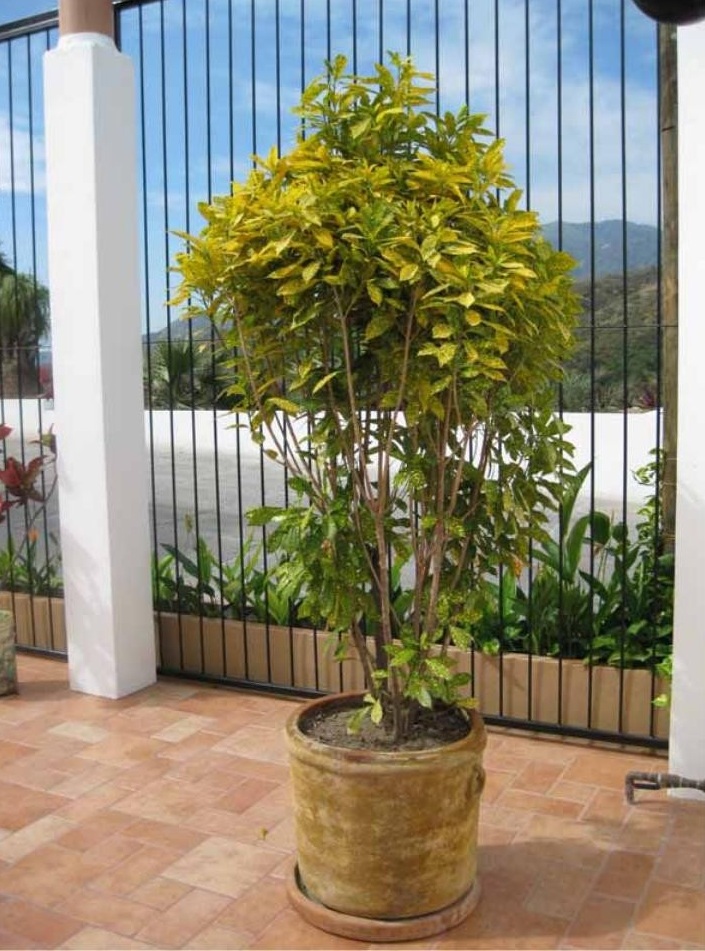
Codiaeum variegatum
Family: Euphorbiaceae (Also known as: Joseph’s Coat)
The Croton’s wide array of speckled, striped and splotched colors, splashed on a diversity of uniquely shaped leaves, is a pure and simple plant delight. They can be used in pots on terraces, by pools and in entryways or used as a single striking statement in one’s yard. But wherever they are planted, remember that these striking plants love rich, well drained, soil that incorporates compost, frequent watering and moderate to intense sun.
At a figure of around 750 species, there may be more varieties of this plant than any other tropical ornamental. Just the variety of leaf shapes is somewhat mind boggling. The diversity includes: Broad, Oak, Semi-Oak, Spiral, Narrow, Very Narrow, Small, Interrupted, and – the scarcest – Recurved leaves. Leaves generally are stiff, point upward and have a wax-like feel. New leaves on the Croton plant are green and change color as they grow and mature. . . as has my hair.
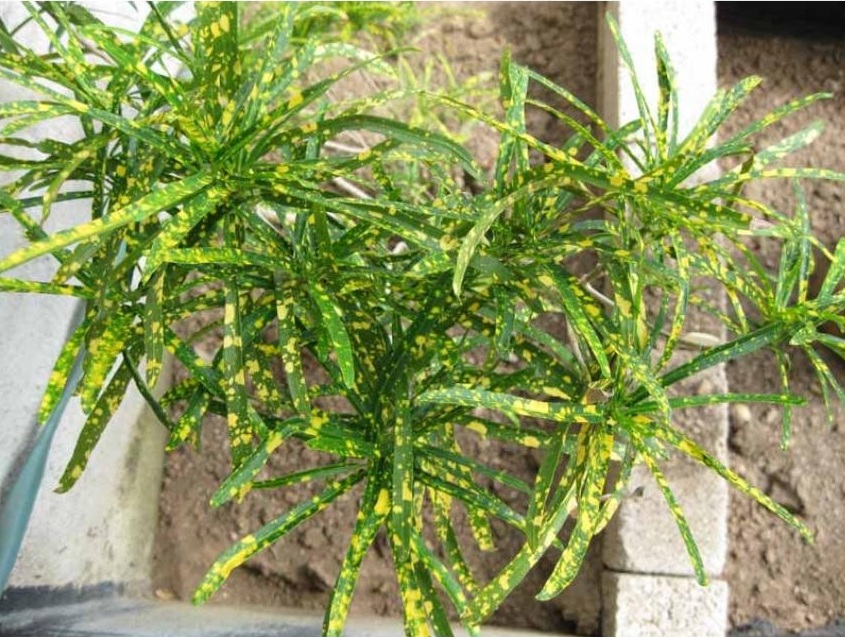
Originating in Malaysia, Southern Asia and the Pacific Islands, Crotons, generally, can achieve a height of nearly three meters. Our several varieties, planted against a long, tall white wall make a rather dramatic and colorful statement.
Root watering and humidity are very important factors for Crotons. Its soil needs to stay moist. But, in turn, do not over-water as they don’t like to stand in water. During their non-growing season (read “the winter months”) less water will be required. In areas of low humidity misting of the leaves once or twice a week is encouraged. Leaf browning is an indication that the plant is too dry.
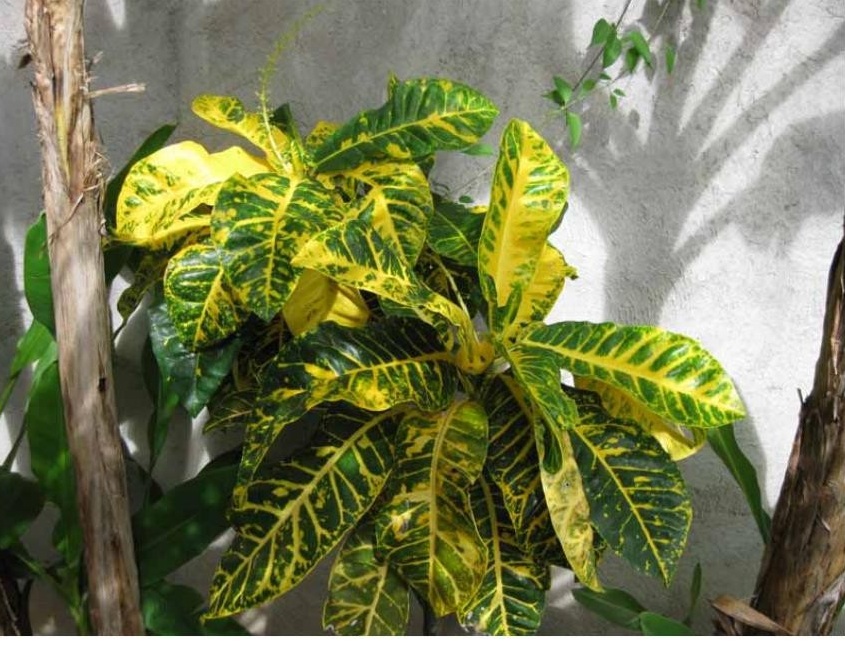
I know this sounds wishy-washy (no pun intended), but wilting or the falling off of leaves is a sign that the plant is either being over-watered or the soil has been allowed to dry out.
When watering during the growing season, light usage of a general purpose fertilizer, every three weeks, should keep them happy. For the absolute optimal plant feeding, up until September, use of high nitrogen is preferred and after that only use a fertilizer that has more phosphorous and potash. (I put dried cow manure around them year around!)
If you have the inclination, Crotons can be propagated through air layering, leaf bud cuttings or greenwood cuttings. The good news is that the Croton plant roots quickly.
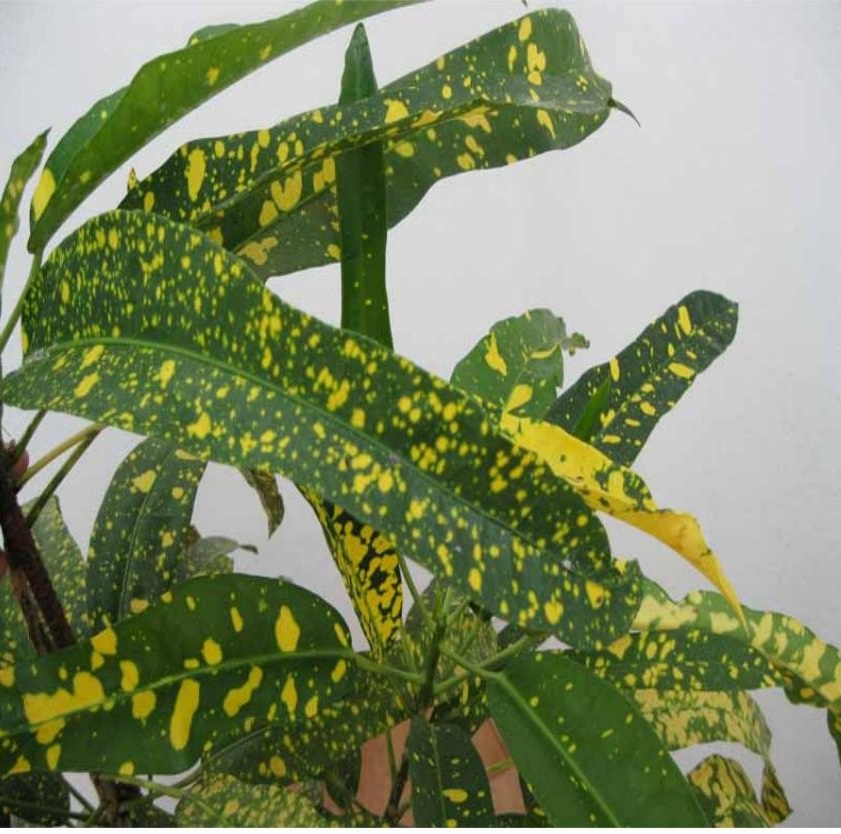
Temperatures of about 60-80 degrees (Fahrenheit) are what these colorful cultivars prefer. So, if the temperature is too hot or too cold or fluctuates too fast, the leaves may fall off – thankfully, unlike my hair.
Should you wish, prune Crotons during the milder time of the year. The heaviest foliage is at the top of the plant. And as to plant pests and diseases, it is susceptible to root rot, scale, mites, and thrips. Toxic, the punctured or torn leaves release a white sap that can stain clothes and can irritate the skin or worse. So don’t you, the kids or the cat eat ‘em!
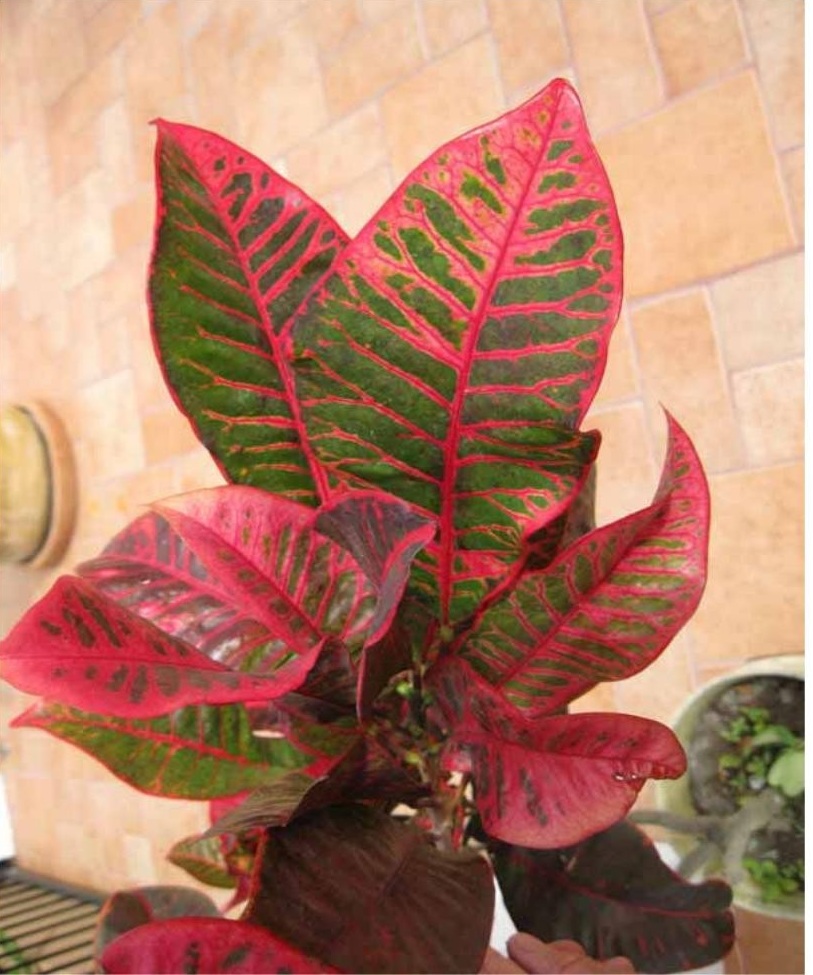
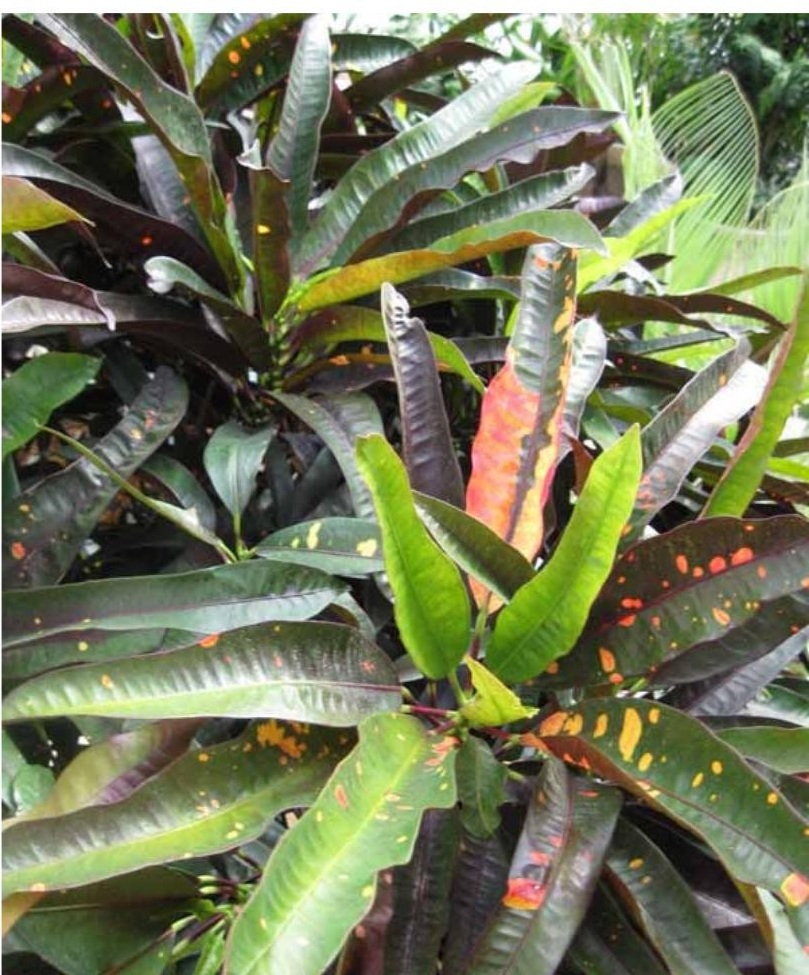
Download the full edition or view it online
—
Tommy Clarkson is a bit of a renaissance man. He’s lived and worked in locales as disparate as the 1.2 square mile island of Kwajalein to war-torn Iraq, from aboard he and Patty’s boat berthed out of Sea Bright, NJ to Thailand, Germany, Hawaii and Viet Nam; He’s taught classes and courses on creative writing and mass communications from the elementary grades to graduate level; He’s spoken to a wide array of meetings, conferences and assemblages on topics as varied as Buddhism, strategic marketing and tropical plants; In the latter category he and Patty’s recently book, “The Civilized Jungle” – written for the lay gardener – has been heralded as “the best tropical plant book in the last ten years”; And, according to Trip Advisor, their spectacular tropical creation – Ola Brisa Gardens – is the “Number One Tour destination in Manzanillo”.


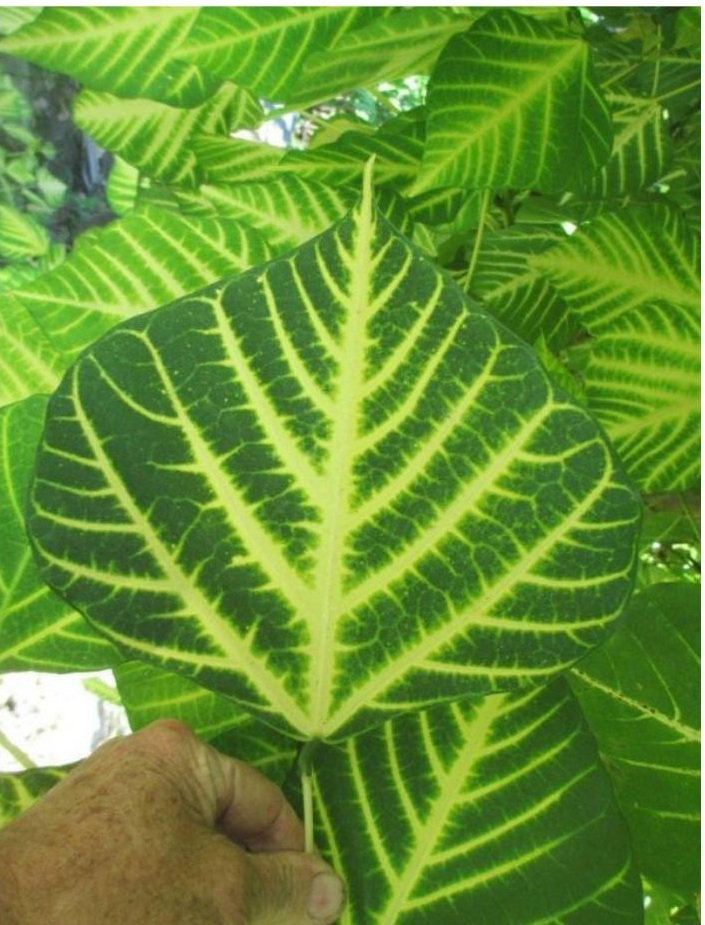
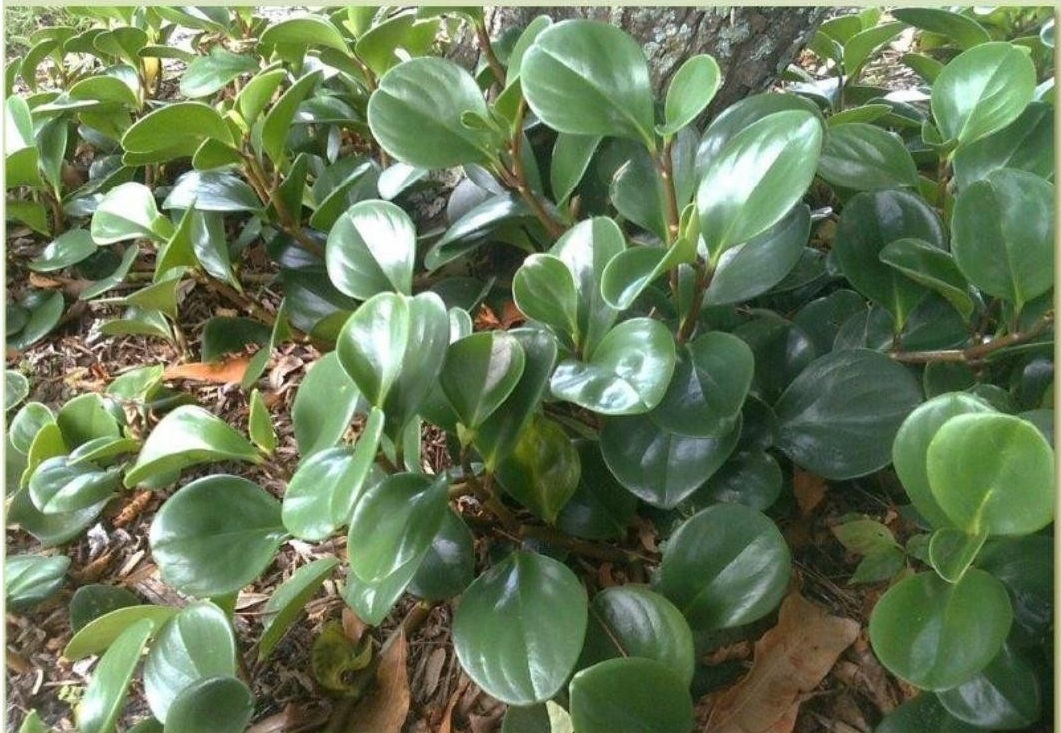
You must be logged in to post a comment.